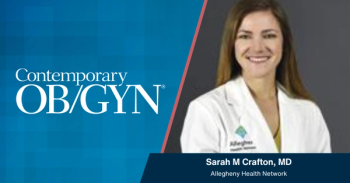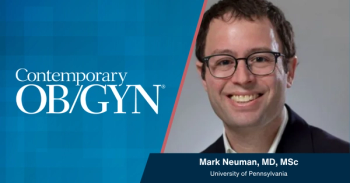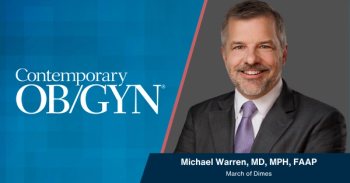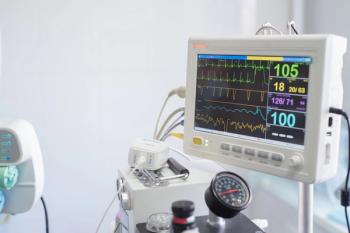
Appraising the benefit of breast cancer screening
The US Preventive Services Task Force's new guidelines for breast cancer screening were met with an outcry from many medical and consumer groups when they were published in November.
Why is identifying the optimal breast cancer screening protocol so difficult?
The second is length bias. Mammography is much more likely to pick up slow-growing tumors than fast-growing tumors that tend to present as "interval" cancers between screenings. Both biases artificially increase the perceived cure rate and survival for tumors found by mammography. Great heterogeneity exists among breast cancers, and a large percentage of them are slow growing with little change over 5 years. As a result, these biases create large effects that greatly influence the apparent efficacy of mammography.
Only very large population-based studies, where the denominator is not the number of cancer patients but rather the number of women without cancer, can overcome these biases. However, these studies are difficult to carry out, and only 8 have been conducted: 1 in the United States in the 1960s and most of the others in Sweden during the 1970s. In spite of the limitations, the results of these studies are fairly consistent. Screening mammography does cause a significant reduction in breast cancer mortality, but the benefit is limited. Screening mammography is associated with about 30% mortality reduction for women 50 through 74 years old and about 15% mortality reduction for women 39 to 49 years old.2,3
Why is the benefit from screening mammography so limited?
Both physicians and the public tend to overestimate the benefit of screening mammography. Since 1990, breast cancer mortality in the United States has fallen about 30%, and statistical modeling suggests that about half of this is attributable to screening and half to better adjuvant drug therapy.4 Furthermore, a recent study showed that after 25 years of screening mammography, the incidence of early stage disease has risen dramatically, but the incidence of locally advanced and metastatic disease has not fallen proportionately.5 Therefore, it seems that the maximum benefit of screening mammography for mortality reduction plateaus at about 25% to 30%. Why should this be?
Cancers that are found on screening mammography fall into 4 groups:
1. Indolent, slow-growing cancers that would never become clinically apparent during the patient's lifetime.
2. Slow-growing cancers that would eventually become clinically apparent, but would still be curable at that time.
3. Cancers that are curable when discovered on mammography but will become incurable by the time they enlarge enough to be found on physical exam.
4. Rapidly growing cancers that are already incurable, even when found on screening mammography.
Only the cancers in the third group are helped by screening mammography. Thus, the benefit really depends on the proportion of all cancers that fall into this group, and that depends on the biology of the tumor. Calculations would suggest that about 5% to 10% of all the cancers currently detected fall into the third group. This implies that the benefit of screening mammography depends on tumor biology, not on the sensitivity of the mammography. Thus, it seems likely that technical improvements in mammography or the addition of screening ultrasound or magnetic resonance imaging (MRI) will have only a small effect, if any, on the benefit of the screening for mortality reduction.
Screening ultrasound and MRI complicate the picture further. Although the mortality reduction from screening mammography is modest, it is a proven benefit for all age groups between 39 and 74 years. By contrast, screening ultrasound and MRI are increasingly being used, and there is absolutely no proof that they cause any reduction in breast cancer mortality. In changing the recommendations for mammography, the US Preventive Services Task Force cited the large number of false-positive results leading to additional imaging and biopsies. The false positives and unnecessary biopsies with screening ultrasound and MRI are many-fold higher than with mammography. Furthermore, the only evidence of benefit is that these techniques will detect some cancers.6 However, the important outcome from screening is not the number of cancers detected, but rather a reduction in mortality.
The following is illustrative of an actual patient who experienced this diagnostic "creep." She had a mammogram 2 years ago that showed dense breasts. As a result, the patient underwent screening ultrasound and MRI, which showed 5 abnormalities in both breasts. She had 5 biopsies that were benign. Because of residual concern, however, the patient underwent MRI and ultrasound in addition to mammography every 6 months for the next 2 years. This resulted in several additional benign biopsies. After her most recent MRI, she had yet another biopsy that showed grade 1 ductal carcinoma in situ. Because of the anxiety precipitated by all of these studies, she subsequently elected to undergo bilateral mastectomy. The radiologist felt extremely proud that this "early" cancer was found in spite of very subtle findings and felt that all of the tests were therefore justified. We aren't so sure.
Should our recommendations to patients be changed?
Before releasing its most recent guidelines, the US Preventive Services Task Force reviewed updated evidence regarding breast cancer screening5 and incorporated results from its previous review in 2002.6 With regard to the age at which to begin mammography, only 1 new trial7 and 1 updated trial8 have been published. These 2 studies actually showed a slightly greater benefit for screening women in their 40s than previous trials, with relative risks for breast cancer mortality of 0.83 and 0.69, respectively. The relative risk for all 8 trials combined remains at 0.85 for women in the 40s. Thus, the data really have not changed and certainly do not show less benefit than was previously thought.
It is now estimated that the number of women who must be screened for 10 years to save 1 life from breast cancer is 1,904 women in their 40s, 1,339 women in their 50s, and 377 women in their 60s. Therefore, the decision regarding at what age screening should begin is a value judgment, not a scientific question. However, beginning annual mammography screening at age 40 has been widely accepted among patients and physicians, and the number of false positives and additional procedures associated with this option seems acceptable. Perhaps we should take a lesson from the use of the instant replay in football and not overturn the ruling on the field unless there is incontrovertible proof that the ruling is incorrect.
However, this may be an appropriate time to help physicians and patients appreciate the limitations of breast cancer screening. Clearly, the most rigorous screening will not prevent the majority of breast cancer deaths, and more is not necessarily better. Although the risks of mammography are by and large acceptable, the utility of screening ultrasound and screening MRI is much worse, and the attendant false-positive results greater. At present, MRI and ultrasound can only be recommended for particularly high-risk patients.
DR LANNIN is professor of surgery at the Yale University School of Medicine and executive director of the Yale-New Haven Breast Center, New Haven, Connecticut. DR LOCKWOOD, editor in chief, is Anita O'Keeffe Young Professor and chair, Department of Obstetrics, Gynecology, and Reproductive Sciences, Yale University School of Medicine, New Haven, Connecticut.
REFERENCES
1. US Preventive Services Task Force. Screening for breast cancer: US Preventive Services Task Force recommendation statement. Ann Intern Med. 2009;151(10):716-726.
2. Nelson HD, Tyne K, Naik A, Bougatsos C, Chan BK, Humphrey L; US Preventive Service Task Force. Screening for breast cancer: an update for the US Preventive Services Task Force. Ann Intern Med. 2009;151(10):727-737.
3. Humphrey LL, Helfand M, Chan BK, Woolf SH. Breast cancer screening: a summary of the evidence for the US Preventive Services Task Force. Ann Intern Med. 2002;137(5 part 1):347-360.
4. Berry DA, Cronin KA, Plevritis SK, et al. Effect of screening and adjuvant therapy on mortality from breast cancer. N Engl J Med. 2005;353(17):1784-1792.
5. Esserman L, Shieh Y, Thompson I. Rethinking screening for breast cancer and prostate cancer. JAMA. 2009;302(15):1685-1692.
6. Berg WA, Blume JD, Cormack JB, et al. Combined screening with ultrasound and mammography vs mammography alone in women at elevated risk of breast cancer. JAMA. 2008;299(18):2151-2163.
7. Moss SM, Cuckle H, Evans A, Johns L, Waller M, Bobrow L; Trial Management Group. Effect of mammographic screening from age 40 years on breast cancer mortality at 10 years' follow-up: a randomised controlled trial. Lancet. 2006;368(9552):2053-2060.
8. Bjurstam N, Björneld L, Warwick J, et al. The Gothenburg Breast Screening Trial. Cancer. 2003;97(10):2387-2396.
Newsletter
Get the latest clinical updates, case studies, and expert commentary in obstetric and gynecologic care. Sign up now to stay informed.
















